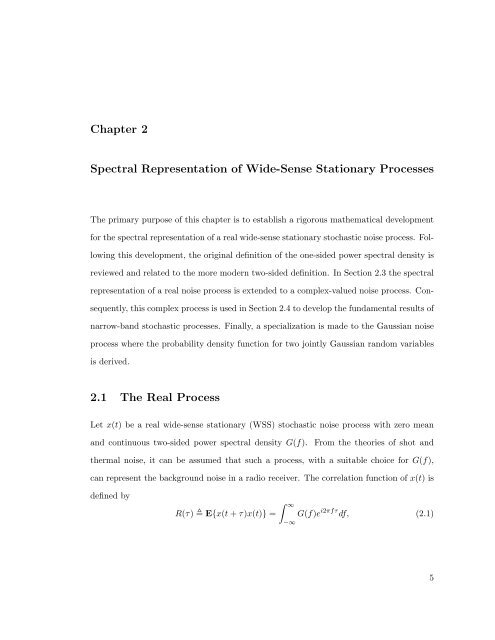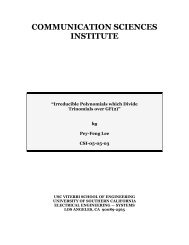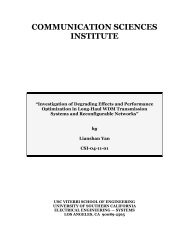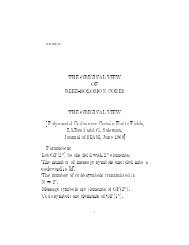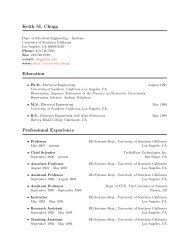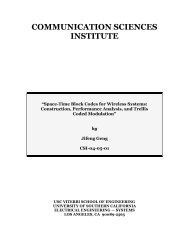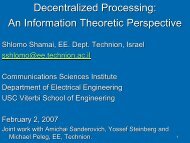Decoding Error-Correction Codes Utilizing Bit-Error Probability ...
Decoding Error-Correction Codes Utilizing Bit-Error Probability ...
Decoding Error-Correction Codes Utilizing Bit-Error Probability ...
Create successful ePaper yourself
Turn your PDF publications into a flip-book with our unique Google optimized e-Paper software.
Chapter 2<br />
Spectral Representation of Wide-Sense Stationary Processes<br />
The primary purpose of this chapter is to establish a rigorous mathematical development<br />
for the spectral representation of a real wide-sense stationary stochastic noise process. Following<br />
this development, the original definition of the one-sided power spectral density is<br />
reviewed and related to the more modern two-sided definition. In Section 2.3 the spectral<br />
representation of a real noise process is extended to a complex-valued noise process. Consequently,<br />
this complex process is used in Section 2.4 to develop the fundamental results of<br />
narrow-band stochastic processes. Finally, a specialization is made to the Gaussian noise<br />
process where the probability density function for two jointly Gaussian random variables<br />
is derived.<br />
2.1 The Real Process<br />
Let x(t) be a real wide-sense stationary (WSS) stochastic noise process with zero mean<br />
and continuous two-sided power spectral density G(f). From the theories of shot and<br />
thermal noise, it can be assumed that such a process, with a suitable choice for G(f),<br />
can represent the background noise in a radio receiver. The correlation function of x(t) is<br />
defined by<br />
R(τ) E{x(t + τ)x(t)} =<br />
∫ ∞<br />
−∞<br />
G(f)e i2πfτ df, (2.1)<br />
5


